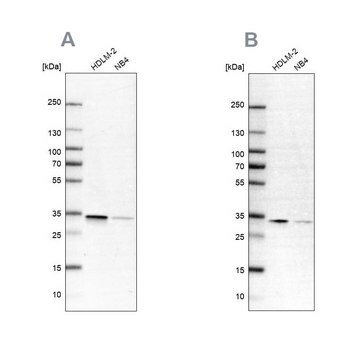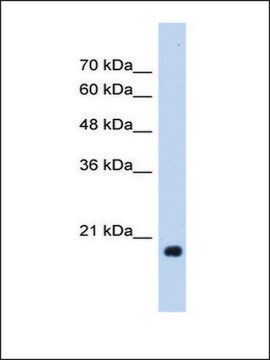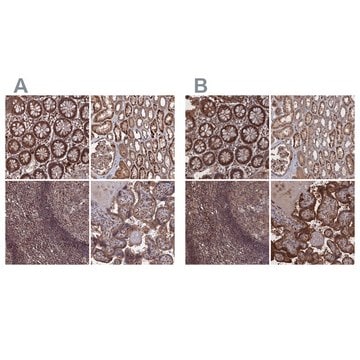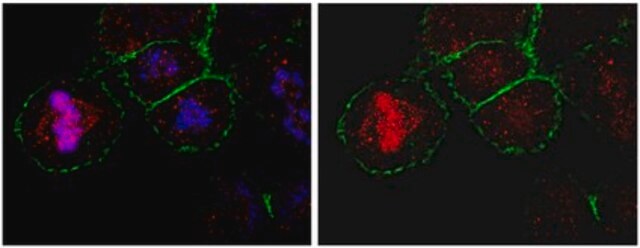ABE2863M
Anti-E3 ubiquitin-protein ligase (UBR5/EDD)
serum, from rabbit
Synonym(s):
E3 ubiquitin-protein ligase UBR5, EDD, EC:2.3.2.26, E3 ubiquitin-protein ligase, HECT domain-containing 1, HECT-type E3 ubiquitin transferase UBR5, Hyperplastic discs protein homolog, hHYD, Progestin-induced protein, EDD
About This Item
Recommended Products
biological source
rabbit
Quality Level
antibody form
serum
antibody product type
primary antibodies
clone
polyclonal
species reactivity
human, mouse
packaging
antibody small pack of 25 μL
technique(s)
immunofluorescence: suitable
immunoprecipitation (IP): suitable
western blot: suitable
isotype
IgG
NCBI accession no.
UniProt accession no.
target post-translational modification
unmodified
Gene Information
human ... UBR5(51366)
Related Categories
General description
Specificity
Immunogen
Application
Epigenetics & Nuclear Function
Western Blotting Analysis: A representative lot detected E3 ubiquitin-protein ligase (UBR5) in U2OS cells transefected with Luc or different EDD siRNA oligos (Smits, V.A., et. al. (2012). Cell Cycle. 11(4):715-20).
Immunoprecipitation Analysis: 2.5ul µL from a representative lot detected E3 ubiquitin-protein ligase (UBR5?EDD) in U2OS cell lysate (Courtesy of Dr. Veronique Smits at Hospital Univers. Canarias, Spain).
Immunofluorescence Analysis: A 1:1,000 dilution from a representative lot detected E3 ubiquitin-protein ligase (UBR5/EDD) in U2OS cells (Courtesy of Dr. Veronique Smits at Hospital Univers. Canarias, Spain).
Quality
Western Blotting Analysis: A 1:50,000 dilution of this antibody detected E3 ubiquitin-protein ligase (UBR5/EDD) in 10 µg of U2OS cell lysate.
Target description
Physical form
Storage and Stability
Other Notes
Disclaimer
Not finding the right product?
Try our Product Selector Tool.
Storage Class Code
12 - Non Combustible Liquids
WGK
WGK 1
Flash Point(F)
Not applicable
Flash Point(C)
Not applicable
Regulatory Listings
Regulatory Listings are mainly provided for chemical products. Only limited information can be provided here for non-chemical products. No entry means none of the components are listed. It is the user’s obligation to ensure the safe and legal use of the product.
JAN Code
ABE2863:
ABE2863-25UL:
Certificates of Analysis (COA)
Search for Certificates of Analysis (COA) by entering the products Lot/Batch Number. Lot and Batch Numbers can be found on a product’s label following the words ‘Lot’ or ‘Batch’.
Already Own This Product?
Find documentation for the products that you have recently purchased in the Document Library.
Our team of scientists has experience in all areas of research including Life Science, Material Science, Chemical Synthesis, Chromatography, Analytical and many others.
Contact Technical Service








